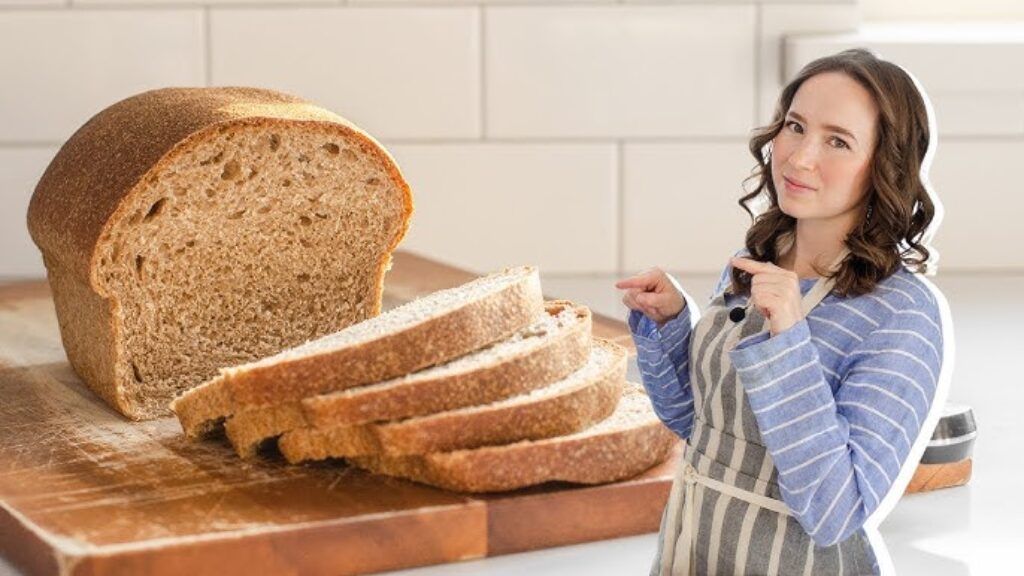
The quest for a definitive, single answer to “how many calories are in low calories whole wheat bread?” is a bit like asking for the exact temperature in a large city – it varies depending on specifics. However, we can certainly provide a clear range and explain what makes one slice different from another.
For many aiming to manage their weight or simply eat healthier, choosing the right type of bread can feel like navigating a complex carbohydrate minefield. White bread is often out, and whole wheat is in, hailed for its fiber content and nutritional profile. But what about calories? Specifically, the bread marketed as “low calorie whole wheat bread” – just how low is its calorie count, and what factors influence that number?
Decoding “Low Calorie” and “Whole Wheat”
Before diving into the numbers, let’s quickly clarify what we mean by these two key terms in the context of bread:
- Whole Wheat: This term indicates that the bread is made using flour ground from the entire wheat grain – the germ, endosperm, and bran. This is crucial because the bran and germ contain most of the fiber, vitamins, minerals, and healthy fats, which are stripped away during the processing of refined white flour. True whole wheat bread will list “whole wheat flour” as a primary ingredient, ideally the first ingredient.
- Low Calorie: This is where definitions can get a little flexible. While there isn’t a single, strict legal definition specifically for “low calorie bread” that applies universally to health claims on packaging compared to standard bread, the general understanding, often guided by regulatory bodies like the FDA in the US or similar bodies elsewhere, is that a product labeled “low calorie” should contain significantly fewer calories than its standard counterpart. For bread, this typically means reducing the calories per slice compared to a traditional loaf, which might clock in at 80-110 calories per slice or more, depending on size and density.

Brands achieve this “low calorie” status in whole wheat bread by several methods:
- Increasing Fiber Content: Adding extra fiber (like cellulose or inulin) can replace some of the digestible carbohydrates or fats, reducing total calories while increasing bulk and often satiety.
- Using More Water/Air: Lighter, less dense bread recipes naturally use less ingredients per slice volume.
- Reducing Added Sugars and Fats: Minimizing calorie-dense ingredients like oils and sweeteners.
So, What’s the Ballpark Calorie Count?
Based on the methods used by manufacturers to create “low calories whole wheat bread,” you can generally expect a typical slice to fall within a range of:
40 to 70 calories per slice
This is a broad range, and the exact number for the loaf you are holding depends entirely on the specific brand and product formulation.
Factors That Influence the Final Calorie Count
As mentioned, that 40-70 calorie range isn’t a hard rule. Several factors contribute to where a particular loaf of low-calorie whole wheat bread lands on that spectrum:
- Slice Size and Weight: This is arguably the most critical factor. A small, thin slice from one brand might be 45 calories, while a larger, thicker slice from another might be 60 calories, even if the ingredients per gram are similar. Always look at the serving size on the nutrition label – it will specify calories per slice or per serving weight (e.g., 45g). Comparing calorie counts requires comparing equal serving sizes or weights.
- Ingredient Composition: Even within whole wheat, the specific recipe matters.
- Amount of Flour: Less dense bread uses less flour (and thus fewer calories) per slice.
- Added Fiber: Breads with added government-approved fibers may have lower net calories per serving.
- Added Sugars and Fats: While ideally minimal in “low calorie” versions, any added oils or sweeteners will contribute calories.
- Other Inclusions: Seeds, nuts, or fruits mixed into the dough will significantly increase the calorie density. Low-calorie versions usually avoid these.
- Moisture Content: Bread with higher moisture content uses less dry ingredients (like flour) per unit of weight, which can slightly lower calories per slice if slice size is kept consistent.
- Processing Method: While less impactful than ingredients or size, variations in baking techniques can slightly affect density and thus calorie count per slice.
Why Choose Low Calories Whole Wheat Bread? Beyond the Calorie Count
While the lower calorie count is a primary draw, choosing this type of bread offers several other potential benefits that contribute to a healthy lifestyle:
- Increased Fiber Intake: Whole wheat flour and often added fibers contribute significantly to your daily fiber goal. Fiber aids digestion, helps regulate blood sugar levels, and promotes feelings of fullness, which can be beneficial for weight management.
- Nutrient Density: Unlike refined white bread, whole wheat bread retains more of the natural vitamins and minerals found in the grain, such as B vitamins, iron, magnesium, and selenium.
- Support for Weight Management: By providing fewer calories per serving compared to standard bread, it allows you to potentially enjoy a slice or two without consuming excess calories, making it easier to stay within your daily calorie target. The fiber also contributes to feeling satiated, which can help prevent overeating.
- Heart Health: Diets rich in whole grains are associated with a reduced risk of heart disease. The fiber, antioxidants, and other nutrients in whole wheat play a role in this benefit.
- Blood Sugar Control: The fiber content helps slow down the absorption of sugar into the bloodstream, leading to a more gradual rise in blood sugar levels compared to refined grains.
Navigating the Bread Aisle: Reading the Nutrition Label
The absolute best way to know how many calories are in the specific loaf of low-calorie whole wheat bread you’re considering is to turn the package over and read the Nutrition Facts label. Here’s what to look for:
- Serving Size: This is paramount. It will state the number of slices (usually 1 or 2) and the corresponding weight in grams. Make sure you understand what constitutes one serving.
- Calories: This clearly states the number of calories per serving.
- Total Carbohydrates: Look at this figure. Below it, you’ll find:
- Dietary Fiber: Aim for bread with a high fiber count (typically 2-4 grams or more per slice for low-calorie versions). This is a key benefit.
- Total Sugars: This includes both naturally occurring sugars and added sugars. Pay close attention to “Added Sugars” and aim for a low number.
- Protein: Whole wheat bread provides some protein, contributing to satiety.
- Sodium: Bread can be a significant source of sodium. Compare brands and choose one with a lower sodium content if possible.
Fitting Low Calorie Whole Wheat Bread Into Your Diet
Choosing a low-calorie whole wheat bread slice is a good start, but how you eat it matters too.
- Portion Control: Even though it’s lower calorie, eating half a loaf defeats the purpose. Stick to the serving size recommended on the package, or one to two slices depending on your calorie goals for that meal/snack.
- Healthy Pairings: Enhance the nutritional value of your bread consumption by pairing it with healthy foods.
- Use it for sandwiches filled with lean protein (turkey, chicken, tofu), lots of vegetables, and healthy fats (avocado, a thin layer of hummus).
- Top it with mashed avocado and a sprinkle of seeds, or ricotta cheese and berries.
- Serve alongside a protein-rich meal or a large salad.
- Consider the Whole Meal: Think about the total calorie and nutrient content of your entire meal, not just the bread. A low-calorie bread slice piled high with sugary jam and butter will add up quickly.
Things to Be Mindful Of
While “low calorie whole wheat bread” is often a healthier choice, be an informed consumer:
- Sodium Levels: Some low-calorie or high-fiber breads can be surprisingly high in sodium to improve flavor or texture. Always check the label.
- Added Sugars: Some brands might add sugar to make the whole wheat taste more appealing. Check the “Added Sugars” line on the nutrition label.
- Marketing vs. Reality: Don’t rely solely on front-of-package claims like “light” or “low calorie.” Always verify the actual calorie count and ingredients on the Nutrition Facts panel and ingredients list. Ensure “Whole Wheat Flour” is a primary ingredient.
And Finally
So, to answer the title question directly: a slice of low calories whole wheat bread typically contains between 40 and 70 calories. However, this is a general guideline, and the precise number is specific to the brand and product formulation you choose.
Making an informed decision goes beyond just the calorie count. By understanding what makes a bread “low calorie” and “whole wheat,” reading the Nutrition Facts label carefully (paying attention to serving size, fiber, and sugar), and incorporating it mindfully into a balanced diet, you can enjoy the benefits of this healthier bread option as part of your overall wellness journey. It’s a tool to support a healthy eating pattern, providing valuable nutrients and fiber while helping you manage calorie intake compared to more conventional breads.










